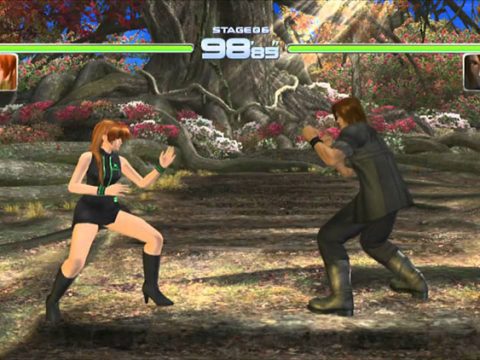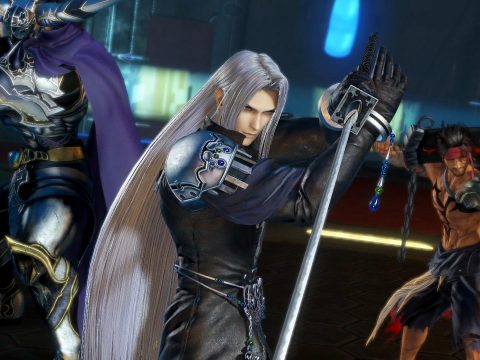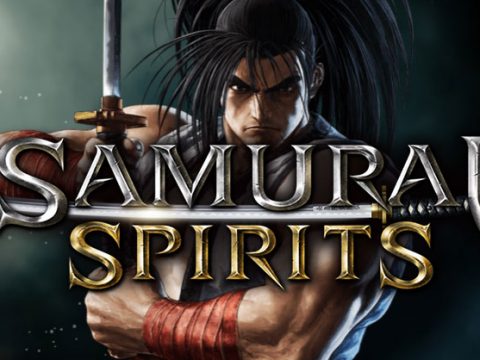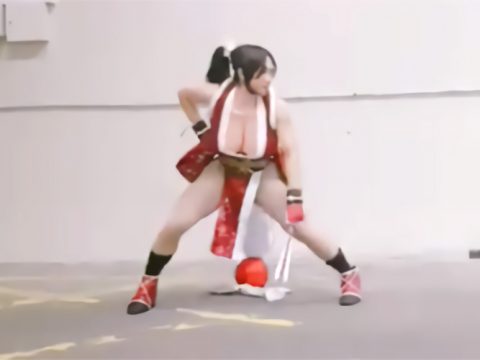
To explain why the third BlazBlue chapter (and the fourth BlazBlue console release) is a $50 stand-alone release in an age of DLC and patches, we must explain the people who play fighting games, and how Arc approaches them.
There are two groups of fighting game fan: those who are in it for the characters and story, and competition-minded players who are deep into the inner workings of the fighting itself. There is certainly overlap, but these camps are significant.
The first group is not really interested in new versions of the game if the story doesn’t advance: certainly not in a $50, brand-new copy where the only changes aren’t relevant to them. Two or three extra characters, or just a few balance tweaks, are not really enough for someone who isn’t too invested in the game itself.
The second group are something of a captive audience, the same as people who buy the new Madden game every year: they can either pay up to stay current or quit the game altogether. Sometimes a scene develops around an older game (most famously Smash Brothers Melee), but that original copy of Street Fighter IV is about as useful to a competition player as a copy of Madden 2008 to a football fan. By the same token, Xbox BlazBlue players were completely abandoned with this PS-only release. (The 360 was an extreme niche console for the hardest of otaku in Japan. It was understood to be truly dead once Idolm@ster jumped ship to PS3.)
Arc’s BlazBlue releases are designed to appease both of these groups, to make sure that everybody who likes the game ponies up for the new version. To ensure the story people buy into every version, every single BlazBlue release features a new and massive story mode told in visual novel format. I’m going to let the cat out of the bag here and say that I am not the person this story is for. Imagine stretch after 20-minute stretch of talking-head exposition, like a bad fantasy light novel crossed with a Shonen Jump fight comic where the fight never comes… and in this game you’re starting at volume 8 with zero background given.
The three-pronged map of the story is massive and sprawling, and when “Episode 1” of one of three paths turned out to be just 40 minutes of two characters discussing a magical Macguffin, which both characters ultimately concluded they knew nothing about… I made that my cue to leave.
The pace of Story Mode is plodding, the main characters aggressively unlikable, and the exposition endless… but understand that these 20 hours are a major draw for the story fan, and the reason many players are going to pay $50 for BlazBlue again. That’s how that works.

To appease fighting game players, there are quite a few new characters with unique styles — Amane is a long-range attacker who confuses with his magic kimono, and Azrael seems to have dropped in from Arc’s Fist of the North Star game– and the requisite long list of balance changes. New systems like Over Drive mode (burn away your precious defensive burst gauge in exchange for new abilities) attempt to encourage more aggressive play, which has been Arc’s prerogative for years. Throw away defense and rush, rush, rush.
As a fighting game, BlazBlue is, in a word, complicated. It’s complex, too, rich in its tactics and variations, but first and foremost it is easily among the most complicated modern fighting games. There are simply a pile of systems and rules, many particular to this version of the game. The game tutorial, to its credit, explains the systems in great detail, but it plops them in front of the player with the grace of a textbook. New players are likely to be overwhelmed.
BlazBlue is built over the bare bones of Guilty Gear: you might notice this right away, as several characters (especially Ragna, Jin, and Tager) are direct riffs on established GG characters. However, it ups the variables in an already complex system, and several years into BlazBlue‘s life, it’s an extremely intimidating game. For every system that Guilty Gear attempted to compress into one place, Chronophantasma puts a new bar on the screen.

To be at all effective with a character beyond the button-mashing level, one needs to learn a combo or two. The combos the game teaches in Challenge mode stretch out to the length of a self-parody of a tutorial: in many cases the combo is actually hard to read because there are so many moves that only half of them fit on the screen at one time. There won’t be an apparent internal logic to these 15-step combos, the steps just need to be memorized and performed until they’re understood. And the combo by itself, which you’ll be practicing for hours, is just one step towards mastery. Just being able to rattle out those commands isn’t nearly enough to win.
Like many great fighting games, the real feeling of accomplishment comes after quite a lot of hard work. Pulling off the trick that looked impossible an hour ago is a feeling you just can’t get any other way. Beating the player who looked impossible to beat an hour ago is even better. However, even as this practice-oriented genre goes, the BlazBlue “work” ceiling is quite high. Characters tend to be built for the expert: beginners are advised to stick to Ragna and Jin, if only just to learn the basics.

A super-beginner “Stylish” mode simplifies the controls to the point where the game is doing all the work for you, like the automatic mode in Devil May Cry or Bayonetta, if you want to throw the finer points out altogether and just power through easy fights against the computer (story mode actually recommends you switch to Stylish controls).
In any case, once you’re up there and ready to fight, the game’s online modes excel: they’ve had plenty of iterations to work on this part. There are ranked and unranked matches, but also a social lobby where players walk around as cute little pixel avatars and can chat. When jumping into the ranked match queue, players can play any other mode in the game (including Story!) and their progress will be held.
If you’re not up for a PvP competition, there are a quite a few single-player modes, but outside of Story mode they’re all pretty tough. The long dungeon crawl of Abyss mode gets pretty difficult as it goes on. Score Attack is a no-continues mode with impossible final bosses (some of the paid DLC can be obtained by beating this mode… which is shady.) But Unlimited Mars mode begins unreasonably difficult and just stays there. Even seasoned players will have trouble with this mode.
The DLC, meanwhile, is the ugly part. It is understood that competitive games like this — like LoL, like DoTA — feature paid characters and cosmetic items: nobody wants it to be possible to pay to actually make the character stronger. Extra characters, voice packs and color sets are all well and good… but what is wrong with Chrono Phantasma‘s DLC is what else is being sold and how much it’s being sold for.
Remember before, when I said that old fighting game versions go obsolete? Well, if you hit the DLC store in this game, you’ll see the content of the previous games — the old backgrounds, the old music, even the old character sprite for director’s favorite Noel, who was redrawn in a new costume in Chrono Phantasma — all being sold back to you for $18 total. Making players pay for the old content seems low, but it looks downright friendly next to how the music and stage DLC was sold in the Japanese version: each of 4 pieces was packaged with a different $70 limited-edition volume of the horrendous BlazBlue: Alter Memory anime. Brutal.

Character DLC is a bit annoying. If you want to unlock a certain character without running through the long story mode, that’ll be $2.50. If you want the far-and-away best character in the game, who clearly wasn’t playtested and who is so overpowering when played properly that she’s actually been banned from tournament play, that’s $8. Another character is only given to players who bought the first print run of the disc copy of the game: digital buyers are currently screwed and will be given the privilege of paying another $8 for him later.
The final insult is that as in previous BlazBlue versions, your DLC from a previous version does not carry over to the next one. If you bought colors or voice packs last time, guess what? Now they’re gone. This will not be the final BlazBlue version, so this will happen again. Forgive me for hammering the point home, but this DLC scheme is simply so bad. It makes Arc’s biggest, most supportive fans into suckers. Since these upgrades are so niche-targeted to begin with, Arc should really do better for their sake.
All that being said, this is a game mostly for people who are already invested in the BlazBlue phenomenon on one side or the other. It’s no beginner game: if you want a simple anime fighter I suggest the criminally underrated Aquapazza. This isn’t to say a first-timer can’t pick up BlazBlue, but be aware that it’s going to take a lot of work and consider whether you’re up to that challenge. As for the story, you can watch the BB anime to decide if it’s for you. My “horrendous” might be your gold!
BlazBlue Chrono Phantasma
Publisher: Aksys
Developer: Arc System Works
Console: PS3
Price: $50





